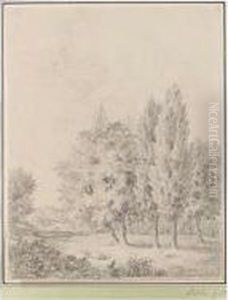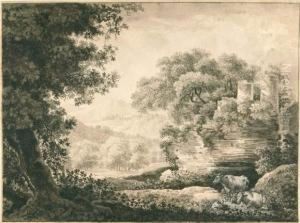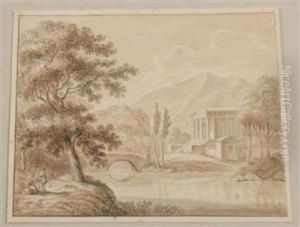Heinrich Theodor Wehrle Paintings
Heinrich Theodor Wehrle was a Swiss artist, born in 1817 in Flühli, near Lucerne, Switzerland, and died prematurely in 1839 at the age of 22. Despite his short life, Wehrle left behind a legacy that has intrigued art historians and lovers of Swiss art for centuries. His work is characterized by a fascination with the natural world, coupled with a keen observation of rural life and landscapes, which was reflective of the Romantic movement sweeping through Europe at the time.
Wehrle's upbringing in the picturesque landscapes of Switzerland deeply influenced his artistic direction. From a young age, he showed an exceptional talent for drawing and painting, often taking the Swiss countryside and its inhabitants as his subjects. His family, recognizing his talent, encouraged his artistic pursuits, though detailed records of his formal education in art are scarce. What is known is that his work captures the essence of the Romantic era, with a particular focus on the emotive power of nature and the sublime.
Despite the brevity of his career, Wehrle's oeuvre consists of a variety of works, including landscapes, portraits, and genre scenes. His landscapes, in particular, are noted for their detailed realism combined with a sense of idealism, showcasing the beauty and majesty of the Swiss environment. These works not only reflect Wehrle's personal connection to his homeland but also contribute to the broader Swiss artistic tradition of the 19th century, which celebrated the nation's natural beauty.
Unfortunately, Wehrle's life was cut short when he died in 1839, leaving behind few completed works. The reasons for his early death remain a subject of speculation among historians, with some suggesting illness, while others propose the hardships of the artist's life might have contributed. Regardless of the cause, his death marked the loss of a promising talent in Swiss art.
Today, Heinrich Theodor Wehrle's work is preserved in various Swiss museums, and his legacy is celebrated for its contribution to the Romantic movement in Switzerland. His ability to capture the essence of Swiss rural life and landscapes with such depth and feeling, despite his short career, continues to captivate art enthusiasts and serves as a testament to his talent and potential.


